Part 3: Creation of a Fishery Management Plan
FMPs, in General
The keystone to federal fish management is the Fishery Management Plan (FMP). An FMP will establish how many fish can be caught by which fishers and when. That is harder than it sounds, as this Guide attempts to show. The FMP will also establish back-ups for when something goes wrong with the original plan, such as bad weather or when harvest levels are reached too soon.
Councils use plans to protect fishery resources while allowing domestic commercial and recreational fishing at sustainable levels. The process to develop FMPs is established by law and involves multiple steps and many participants. This process is laid out in the Magnuson-Stevens Act and the federal regulations that interpret the statute.
To accomplish the goal of managing fish to attain sustainable populations, the Council identifies fish species and species groups that are in need of conservation or management. Not all fish are managed by an FMP: only those fish in need of conservation or management. With the help of its members, committees, and panels, the Council analyzes the biological, environmental, economic, and social factors affecting these fisheries, and prepares and modifies FMPs and regulations for domestic and foreign fishing in the region.
One key factor in fishery management is understanding the stock being managed. Stocks are assessed by studying the age, mortality rate, spawning habits, and how much effort it takes to catch a recruit (more on these assessments below). This information is generated or gathered by a Council’s Scientific and Statistical Committee (SSC), which determines overfishing levels so that the Annual Catch Limit (ACL) does not lead to overfishing or overfished stocks. The SSC also works with its Council to set the Acceptable Biological Catch (ABC). These terms are discussed later in this section.
Terms Used in Assessing a Fishery’s Health
Overfished means there are not enough fish to produce the maximum sustainable yield on a continuing basis;
Undergoing Overfishing means the rate or level of fishing mortality that jeopardizes the capacity of that fishery to produce the maximum sustainable yield on a continuing basis;
Rebuilt refers to a previously overfished stock that has increased in abundance to the target population size to support its maximum sustainable yield.
The FMPs describe the nature and problems of a fishery along with regulatory recommendations to conserve the fishery. After approval by the Secretary of Commerce, regulations that implement management measures in the FMP become legally enforceable by NMFS, the U.S. Coast Guard, and state enforcement agencies.
Definition of “Fishery”
Under the MSA, fishery is defined as a unit that can be managed, which may seem vague. In practice, a fishery can mean different things. It can refer to a species of fish, a stock of fish with multiple species, or is combined with the gear used to catch fish. For example, the Mid-Atlantic FMC manages Atlantic mackerel, longfin squid, illex squid, and butterfish as one fishery. Another example involves swordfish. One fishery of the Pacific FMC is swordfish drift gillnet, but swordfish are also in other fisheries, such as longline off Hawai’i, part of the Western Pacific FMC.
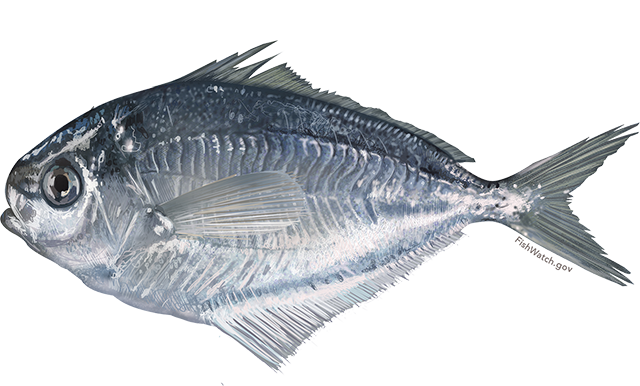 Butterfish
Butterfish
The Process to Develop an FMP
The Councils are required to develop FMPs for each fishery under their authority that requires conservation and management, under 16 U.S.C. § 1852(h)(1). The Council develops the plan and forwards it to NOAA for approval and for NOAA to conduct the rulemaking process, which requires public input. See Public Participation section below. NOAA also conducts an environmental review under the National Environmental Policy Act (NEPA) to consider the direct and indirect effects on the environment from the proposed plan.
Once approved by NOAA, the plan is published in the Federal Register for 60 days seeking public comment. The law requires that comments must be taken into consideration when developing the final plan. Once final, FMPs are recorded as regulations and are enforceable under federal law. Because of the required steps, developing FMPs takes time. These steps are outlined in the Process to Create or Amend a Fishery Management Plan, and illustrated in the Process for a Specific FMP Amendment.
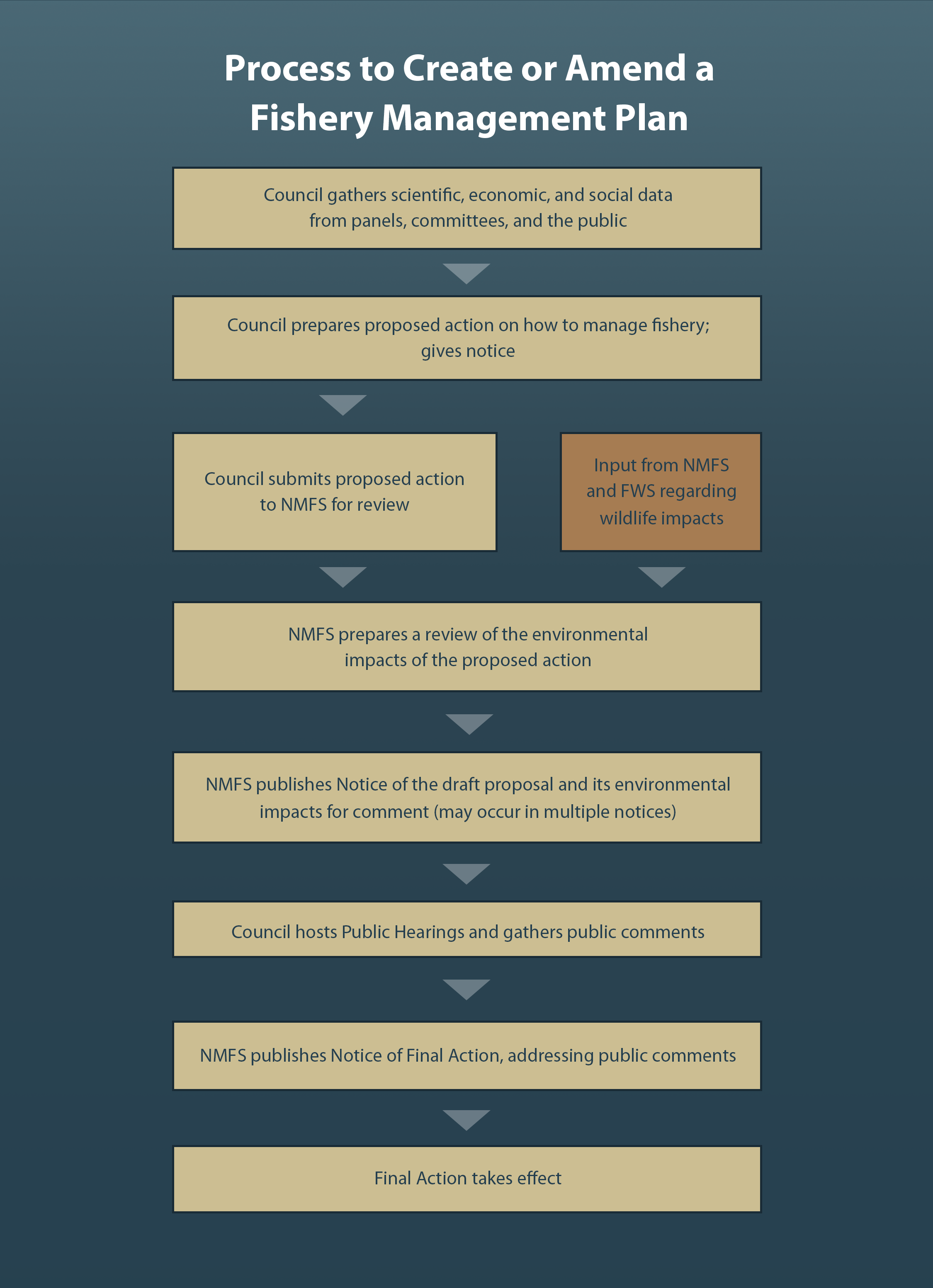
To see how this process plays out in the real world, see Process for a Specific FMP Amendment below. It illustrates the coordination between the Council and NMFS and multiple chances for public input, including hearings. As shown by the dates, it took more than three years from the initial gathering the information to put the Amendment into effect.
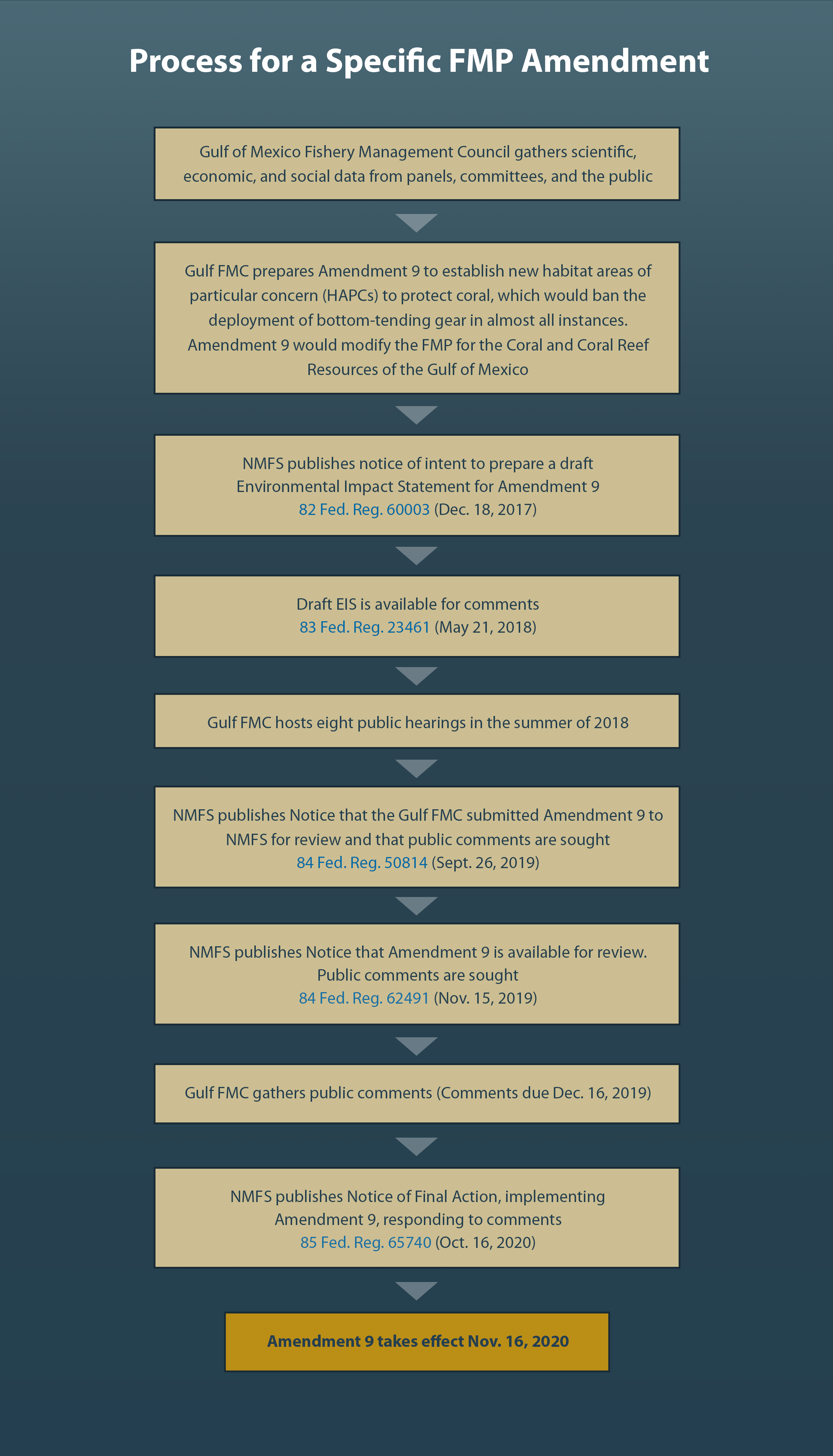
The Secretary of Commerce is also authorized to write Fishery Management Plans without a Council in rare instances. Circumstances that call for a Secretarial Plan are management of highly migratory species or when regional Councils fail or are unable to act on an FMP or fishery problem in a timely manner. Secretarial plans are also open to public comment.
What Are Regulations?
Regulations are rules issued by federal agencies to enforce the laws enacted by Congress. They establish the details that a law might lack. For example, the MSA requires FMPs to establish “fair and equitable initial allocations” for limited access programs. The regulations define those allocations to the pound. Regulations are found in the Code of Federal Regulations (CFR). Regulations related to fishery management are in Title 50 of the CFR, section by section, abbreviated 50 C.F.R section ___.
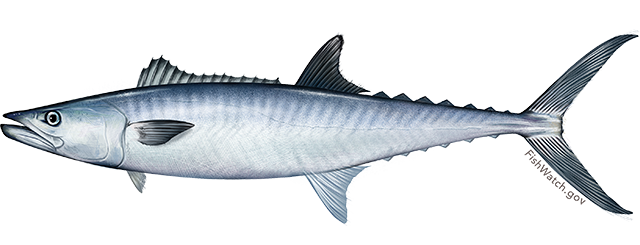 King Mackerel
King Mackerel
Council’s Role Once an FMP Is in Place
Once an FMP is in place, NMFS and the Council are required to monitor the stock to see whether the goals of the plan are being met and to make changes as necessary. Accordingly, much of the Council activity at present involves reviewing and amending plans.
Monitoring the Stock
As part of the continuous monitoring performed by a Council, a team will conduct an annual Stock Assessment and Fishery Evaluation (SAFE) report. The SAFE report provides information to the Councils for determining annual harvest levels for each stock, documenting significant trends or changes in the resource, marine ecosystems, and fishery over time, and assessing the relative success of existing state and Federal fishery management programs. This includes landings, prices, revenues, and economic, biological or environmental conditions not covered elsewhere in assessments for actively managed species. (See, for example, SAFE documents of the Pacific FMC.)
Periodic data assessments are conducted by Councils. One such assessment is the Southeast Data, Assessment and Review (SEDAR), a multi-step method for determining the status of fish stocks in the Southeast Region. The steps in SEDAR include gathering data and sharing information with the public. Those steps are: (1) Data Workshop, (2) a series of assessment webinars, and (3) A Review Workshop. The workshops result in reports and summaries that are publicly available.
Changing a Plan
Any FMP can be amended following the same steps used to create it. Formal amendments, therefore, are time consuming. An amendment must contain the new information that justifies the change. Some changes in how fisheries are managed are anticipated within the FMP, designed to be activated when circumstances change, for example when catch exceeds certain levels. Those include Accountability Measures, Framework Adjustments (sometimes called a Framework Action), and Notice Actions. Because those changes are included as parts of an FMP, they receive public input and review at the time the plan is adopted. No additional public review is required when those mechanisms are used.
Other types of changes to an FMP, such as an Emergency Action or Exempted Fishing Permit, are not provided for within a plan. Because the public did not have a chance to review and comment on them during the FMP development process, these actions required notice to the public of when they are put into place. Notice includes publication in the Federal Register.
Regulatory Amendment
Regulatory Amendments are a formal way to change an FMP for significant modifications in a plan. A Council may use a Regulatory Amendment where the management framework in the FMP does not support a proposed action. This mechanism requires public input and an environmental review, and must be approved by the regional director of NMFS.
Accountability Measure (AM)
Accountability Measures are management controls to prevent ACLs from being exceeded and to correct or mitigate overages of the ACL if they occur. They are required under the 2007 amendments to the MSA. Because accountability measures are built in to an FMP, activation of a measure is not considered an amendment to the plan, which would require additional public comments. Accountability Measures can be in-season, such as by changing trip or bag limits, or post-season, by shortening the following season, for example.
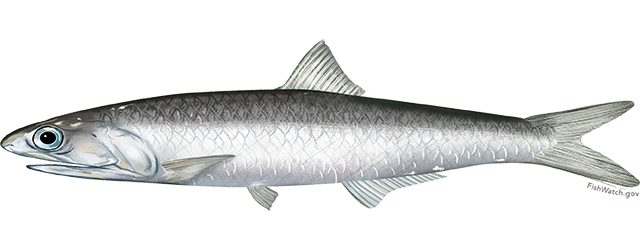 Northern Anchovy
Northern Anchovy
Framework Actions or Adjustments
Framework Actions, sometimes called Framework Adjustments, may be made without the full regulatory process by following the framework procedure within an FMP. An FMP may list examples of changes that may be made via a framework adjustment. If the adjustment is considered routine or insignificant, it may be made by a letter from the Council to the Regional Administrator describing the change and its impacts. If approved by the Regional Administrator, the change will be published in the Federal Register. Examples of a routine or insignificant change are changing the bag limit by one fish or altering gear marking requirements. (If an adjustment is significant, it will require an amendment.)
Framework Adjustment vs. Framework Amendment
It is not always clear when a change to a plan is an amendment, which requires an extensive rulemaking process, or an adjustment, which can be implemented without public input. One such case involved a plan that closed fishing in certain areas. In that case the FMP was altered using a framework adjustment to allow fishing to occur in closed areas under certain circumstances. The challengers argued that the change should have been made by a framework amendment instead. The court considered precedent which holds that a framework adjustment can be used to “implement an FMP, but not to fundamentally alter it.” Oceana, Inc. v. Evans, 384 F. Supp. 2d 203 (D.D.C. 2005). The court found that that closing fishing in certain areas was included in the FMP’s list of permitted framework adjustments, and therefore, the adjustment was the appropriate method. Conservation Law Foundation v. Pritzker, 37 F. Supp. 3d 234 (D.D.C. 2014).
Notice Action
Notice Actions are built-in responses within an FMP to allow changes without requiring full rulemaking. Notice actions may be necessary where conditions in a stock and its fishery change rapidly in a way anticipated by the plan. For example, a notice action may be necessary if the harvest levels are reached too early in the season. The FMP may set a trigger for a notice action based on the fishery reaching a certain condition. For example, when fishing mortality exceeds a certain level a Notice Action may provide that the Council will close the season or lower the bag limit. When a Council uses Notice Actions, it must notify the fishing community of the action through NMFS after approval by NOAA.
Emergency Action
An Emergency Action may be required in the event of an unanticipated catastrophic event, such as a natural disaster or human-caused impact, like an oil spill. In such a case, a Council can use an Emergency Action to modify an FMP without formal rulemaking. The modification, however, is effective only for a limited time period.
A specific procedure applies to an Emergency Action. The Council must determine that an emergency situation exists by majority vote, then forward its decision to the Regional Director of NMFS. The Regional Director will review and send to the Secretary of Commerce. Upon the Secretary’s approval and publication in the Federal Register, the proposed emergency regulation becomes final. The emergency regulation remains in effect for 90 days and can be extended for an additional 90 days. Emergency regulations may be followed by the amendment procedure to make the change permanent after public input. Also, interim rules to prevent and address overfishing may remain in effect for 180 days and can be extended for an additional 180 days.
Exempted Fishing Permit
The MSA gives leeway to Councils to authorize different types of fishing within an FMP under the discretionary provisions in 16 U.S.C. § 1853(b). An exempted fishing permit (EFP) allows a Council to authorize certain fishing practices to see if different methods are effective. Before an EFP takes effect, the Council must publish notice of the application to allow public comment.
One example of an EFP is the Pacific Coast groundfish fishery EFP, which the Council describes as an experimental fishery. The change ended the FMP’s restrictions on gear, time, and area for vessels harvesting widow, chilipepper, and yellowtail rockfish. The test is to see whether allowing these trawling practices would adversely impact populations of protected salmon and sturgeon.
Another example is in the Gulf of Mexico, in which each Gulf State has an exempted fishing permit allowing it to set the recreational private angler season for red snapper.
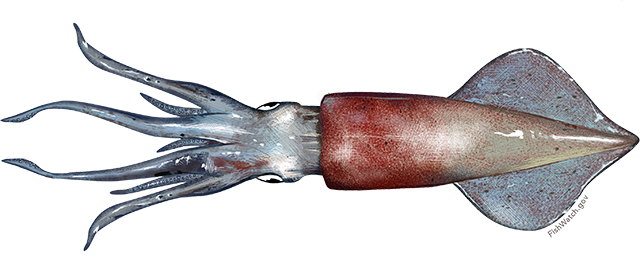 Longfin Squid
Longfin Squid
Public Participation in Fishery Management
By law, the regulatory process is open to the public, and the fishing community is encouraged to participate to ensure that their interests are considered when regulations are created. Fishers who understand how regulations are made and where to go for further information can become effective participants in this policy-making process. The best strategy for influencing policy decisions is to be involved continuously, at all stages of federal management, and not to enter the process only when a new regulation is about to take effect.
Opportunities for participation include the following:
- Data collection
- Staying informed of FMPs and associated changes
- Serving on Panels and Committees
- Commenting at public hearings through written or oral testimony
- Attending Council meetings.
While this may seem a non-traditional role for a fisher to play, the alternative is losing the opportunity to have that particular perspective considered in management decisions.
What Is “Public Comment”?
The notion that a federal action must receive public comment before it becomes final has a long history in U.S. law. Typically, when a Council proposes a change to fishery management, NMFS will publish a notice of the proposed action offering different ways for the general public to give input. Anybody is allowed to submit a comment, whether they are affected directly by the proposed action or not. The Federal Register publishes notices, although local newspapers may publish notices, too. There could be public hearing(s) at which oral or written comments can be made and included in the official administrative record. Some actions seek only written comments made electronically (via a link given in the notice) or by traditional mail to the address given in the notice. The Council is expected to consider the comments before making a final decision.
Marine Recreational Information Program (MRIP)
Part of the input into an FMP comes from data gathered from commercial and recreational harvests. One way recreational fishers participate in fish management is through the Marine Recreational Information Program (MRIP). There are four types of surveys funded by the NMFS MRIP program:
- Access Point Angler Intercept Survey
- Fishing Effort Survey (FES)
- For-Hire Survey
- Large Pelagics Survey (a combination of three surveys)
MRIP surveys are used primarily from Maine to Mississippi with the FES also being conducted in Hawai’i. The FES is mailed to over 300,000 households and asks the number of days fished from shore in the state of residence, and the number of days fished from a boat (private or rented) in the state of residence. The results are combined with catch-per-trip data gathered by the Access Point Angler Intercept Survey which is conducted in person at public fishing access sites. It includes non-resident anglers. Data from that survey are combined with the FES results to estimate recreational catch levels.
Other surveys are funded by states or territories. This NOAA site provides information on all saltwater recreational fishing data collection programs.
How Can a Survey Affect Fishing?
Data from the surveys are used to help set catch limits. An early survey method under the MRIP was found to distort data. That system, the Coastal Household Telephone Survey (CHTS) begun in 1979, was replaced by the FES in 2018. CHTS involved calling landlines in random households in coastal counties and asking about their recreational fishing activity, such as number of trips during a two-month period. NOAA described the CHTS as having “produced significantly lower estimates of recreational effort” in the Gulf of Mexico Reef Fish FMP, 87 Fed. Reg. 48610 (Aug. 10, 2022). The conversion to FEP surveys changed lane snapper estimates to “an approximate doubling of recreational catch and effort estimates,” meaning CHTS significantly underestimated catch. 86 Fed. Reg. 72854 (Dec. 23, 2021). In the Coastal Migratory Pelagic Resources in the South Atlantic and Gulf of Mexico, the switch to FES from CHTS data led to a proposed decrease in the cobia catch in the Gulf to prevent overfishing. 87 Fed. Reg. 40478 (July 7, 2022).
« Go to Part 2 | Part 3: Creation of a Fishery Management Plan | Go to Part 4 »
